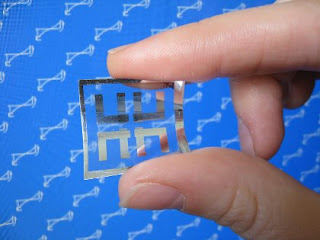Sunday, February 5, 2012
Change Login Keyring in Ubuntu
This would result in some problem within the OS,where it would ask for the login keyring and declare it as incorrect.
To change the login keyring follow these steps:
1) Go to the terminal and type the following two commands:
# killall -9 gnome-keyring-daemon
$ rm -fr ~/.gnome2/keyrings
2) After this is done, go to Preferences>Passwords and Encryption keys
3) Click on File->New. Then select Login Keyring
4) Now enter your present login password.
--Yogiraj
Ubuntu login after you forgot the password
When I did after a long time I realized that I had forgot my password.
This was a common problem with lots of other people around me. They had to re-install Ubuntu as their only resort.
But here I would share the easiest way of changing the password.
Steps:
1) When in the GRUB bootloader, select the "recovery mode"
2) Then in the next screen select "drop to root shell mode"
3) Now if you do not know the username for which you want to change the password, then type "ls /home". This would show the name of all the user account.
4) After you know the username, type passwd <username>, example passwd yogiraj, here yogi is the username.
5) The shell would ask for the new password.
6) After the password has changed, type exit and you would come back to the shell prompt.
Now to start the GUI, type startx.
--Yogiraj
Sunday, January 29, 2012
~~ The Memristor ~~

The Next generation stuff, a microscopic brain. Memristor is a microscopic component that can retain the electrical state even when it is switched off. This component is expected to be much cheaper and faster the the already existing flash storage devices.This device has an amazing speed and can also make the RAM obsolete in the history of computing. The theoretical concept of the memristor came up in 1971, and it has now been built in the labs, ready to revolutionize the world of computers.
This is one technology advancement which is sending shock waves through the world of computing. At present the memristor is under development by a team at Hewlett Packard(HP).
Saturday, January 28, 2012
Understand what wireless sniffers are,what do they do and How do they work ?

Wireless Sniffers:- The term refers to the tools which use the wi-fi or the IEEE 108.11 and scan the channel. They Sniff all the wireless LAN data and control packets on a perticular channel, regardless of the intended receiver . IEEE 802.11 or the Wi-Fi works on the unlicensed 2.4GHz and 5GHz radio bands and transmit data upto a speed of 54megabits per second with a range of approx. 300 ft. In general the Wi-Fi card installed in our PDA's or Laptops can be used for the purpose.
The sniffing tool can use two methods of detecting wireless LAN.
1. Have the adaptor which scans all the channels for the beacon* messages.
Beacon message:- It is a short message which is periodically broadcasted by a wireless access point. It lets the wireless LAN stations to locate and join a wireless LAN. i.e. it consists of the information of the timing , identityand capabilities of any access point .
2.Have the adaptor which transmits Probe Request packets that contain the information of the known wireless LAN's in every channel. Once the access point of a probed wireless LAN a probe request packet it has to respond to it with a Probe Response Packet as an acknowledge that it exists.
The sniffing tools provide wireless LAN diagnosis and monitoring functionality by making them capture and analyze all the wireless data and control packets transmitted on the channel. The tool provides the commands to the adaptor,gets the result and interpret them. One Thing to be kept in mind is that while all this the adaptor must be kept in monitor mode, which is different from normal mode.In normal mode the adaptor receives the data if the MAC address matches to the adaptors', transmits and performs some connection control function. Where as in the Monitor mode the adaptor cannot transmit, it receives the control packets and the data packets on the specific channel regardless of the destination MAC address and transfers it to the sniffing tool. The tool then saves the packets into files, interprets then(if possible) and gives the result to the user.
An Example of a Network Protocol Analyzer is wireshark that is available as a free source on http://www.wireshark.org/download.html
Tuesday, March 8, 2011
Secure yourself from Da Threat Of 'Vital information resource under Siege' (VIRUS)
The computer systems using operating systems rather than windows are generally considered more secure and safe. If one compares the number of viruses for windows and other O.S. windows will break any records.
Keeping in mind the Threats we Tech-da-hack team suggests few essentials to secure your system from viruses:
* Antivirus- It is very essential to install an antivirus program in your system.
* Downloads & email -Look if the ISP has provided you with a web based email access. Check your email and delete the spams. When it comes down to the attachments make sure that the attachment is from trusted source.
* Firewall- Install a trusted firewall to monitor the traffic connecting to your system and block malicious visitors.
*Anti-Spyware- Use an anti spyware on your computer in order to secure yourself from a collection of spywares which gets downloaded when you download certain files from few of the free sources. Note: Spywares are totally different from the viruses.
* Email programs- Its advised to use email programs other than Microsoft Outlook Express or Outlook Express as many viruses use the weakness of these programs.
Wednesday, March 2, 2011
Secure your Wireless world ...

Secure your Wireless Router Using WEP
The world is so advanced and fast the people can't afford to have any kind of time lag in communication. In this run wireless networks(Wi-Fi,Bluetooth,infrared etc.) play an essential role. In this article we the 'tech-da-hack' team is sharing way to secure your wi-fi using WEP.
A wireless network helps a home network to be more volatile. In a wireless network one dosent have to have to look for the ethernet cables ,instead he/she can access the internet or the systems in homenetwork using a wireless adaptor. We have to secure our network from the mallicious or unauthorized users.
In order to make our network secured we have to setup our router's WEP(Wireless Equivalence Privacy) settings.
In order to setup the router first we need a connection with it.
Once you are connected to the router:
* Open your browser and in address bar type the address of your routers access page.Some of the commen routers and their address are:
-> BSNL - 192.168.1.1
-> NETGEAR - 192.168.0.1
-> Airtel - 192.168.1.1
*enter the username and password.Some of the common username and passwords are:
Netgear
username-admin
password-password / 1234
Airtel
username -user
password-password
BSNL
username-admin
password-admin
*Now, look for a tab named "security" on the main router page. In the security select "WEP" as your security type ans choose a password for your network.
* Click on "apply changes" and sing out.
caution: Dont select the "restore factory default settings"
* You may need to reboot your computer in order to apply the settings.
* Now, whener anyone tries to connect to your router the router will ask for the password.
ENJOY THE SECURED WORLD OF BROWSING !!!
Monday, February 7, 2011
Dating site has facebook profiles
"Through special custom software we collected data from more than 1,000,000 Facebook users," explain the authors - Paolo Cirio, a media artist, and Alessandro Ludovico, editor in chief of Neural magazine.
"What we collected is their 'public data' - some of their personal data (name, country, Facebook groups they subscribe to) plus their main profile picture and a few friend relationships. We built a database with all this data, then began to analyze the pictures that showed smiling faces."
Once the database was ready, they used a face recognition algorithm to to "group" the faces into a few categories (see in the picture above) that describe how people define a person just by looking at their faces, without knowing anything about them.
"Face-to-facebook practically questions online privacy through one of the web's most iconic platforms," they write. "… we're not just making a sophisticated critical action against another giant online corporation, but we are also trying to formulate a simple hack that everybody can potentially use. Everybody can steal personal data and re-contextualize it in a completely unexpected context. And that shows, once more, how fragile and potentially manipulable the online environment actually is."
To all of those people who are now "members" of the dating site and don't want to be, the authors offer a way out: "Just write to us and we'll remove your data instantly. This website is a work of art and we're committed to avoiding any related annoyances."
Wired reports that Facebook is looking into the possibility of taking legal action against Cirio and Ludovico.
The social network's terms of service on automated data collection state that to do that, one must have Facebook's express written permission. "We're investigating this site and will take appropriate action," says Facebook's director of policy communications Barry Schnitt.
The dating site is currently unavailable, but it's impossible to tell whether because the duo took it down or because of some technical error.
One thing is for sure, though - they did manage to bring the public's attention to the fact that public available information is up for grabs and - hopefully - raise its awareness about the need to think twice about posting stuff online.
Source of the article:http://tinyurl.com/hnssec

